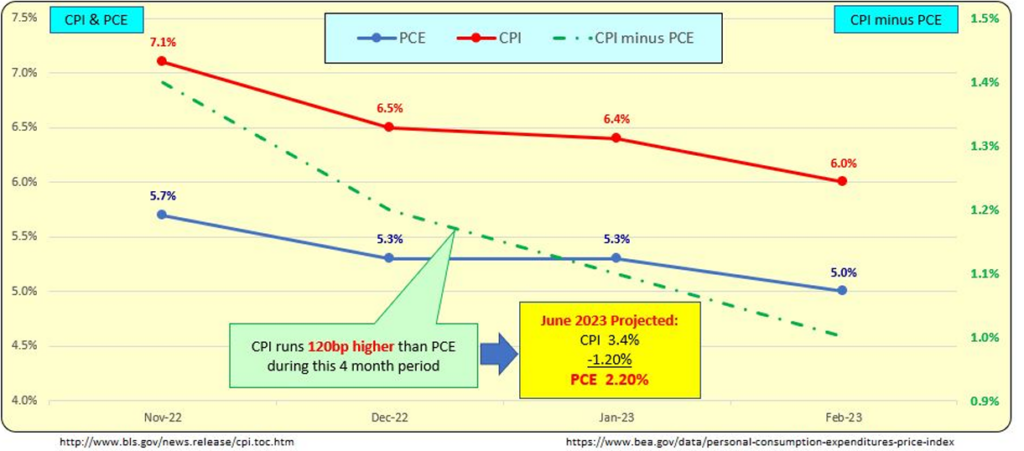The CPI and PCE are both inflation measurements, and both have units of percent. It is
tempting to subtract one from the other, but remember the old math rule in school
where things need common denominators? Well, the CPI has a totally different
denominator than the PCE.
Who calculates the CPI and PCE? In our Federal Government, the President has many
departments with different tasks. There are two different departments that report
inflation, and they have different approaches. There is no “better” approach than the
other; both have their strengths and shortcomings.
The CPI is calculated by the US Department of Labor’s Bureau of Labor Statistics (BLS),
while the PCE is calculated by the US Department of Commerce’s Bureau of Economic
Analysis (BEA). The CPI is based on extensive consumer surveys of the stuff they buy.
Weights are assigned and adjusted every couple of years. When prices go up on an
item, can consumers shift to another product? With the weight adjustments taking place
every couple of years, the CPI calculation does not pick up on this substitution effort by
consumers to avoid higher cost items.
The PCE is based on more macro total items, and it does not look at individual
consumer behavior. For example, how is airline travel inflation calculated? The CPI is
based on prices charged for air travel for sampled routes, while the PCE index for airline
fares is based on passenger revenues and the number of miles traveled by passengers.
Why should we care? The US public is focused on the CPI, while the Federal Reserve sets
interest policy based on the PCE. How do they compare? Well, you can compare the
percents and subtract, but beware: the denominators are totally different. Because of
this, the difference between the two can and will vary over time. For the most part, the
CPI is higher than the PCE, and the spread (aka difference) will vary.


Using the past 4 months, the average difference is 120bp. The CPI is currently 6.0% and is likely headed to 5.1% on April 12th, 2023. If this trend analysis holds, we will be looking at a CPI of 3.4% when June inflation data is released on July 12th.
The Fed uses the PCE, thus if the 120 basis point spread holds and CPI is 3.4%, then the
PCE will be ~2.20%, and that is really close to the Fed’s stated inflation target of 2.00%.
The Fed will never declare victory over inflation; rather, it will issue a muted policy
statement along the following lines: “The recent improvements with inflation, while
significant, warrant further future action should it occur. The Fed will remain vigilant in
its sustained efforts to address inflationary pressures should they arise.”
As with a forest fire, there is a risk that burning embers are out there that can reignite,
thus the firemen remain in the field to address any recurrence. The fire is never put out;
rather, it is contained. It will be like fog; it will gradually go away with little fanfare.
Bill.Knudson@yahoo.com 4.11.23
Bill Knudson, Research Analyst LANDCO ARESC
